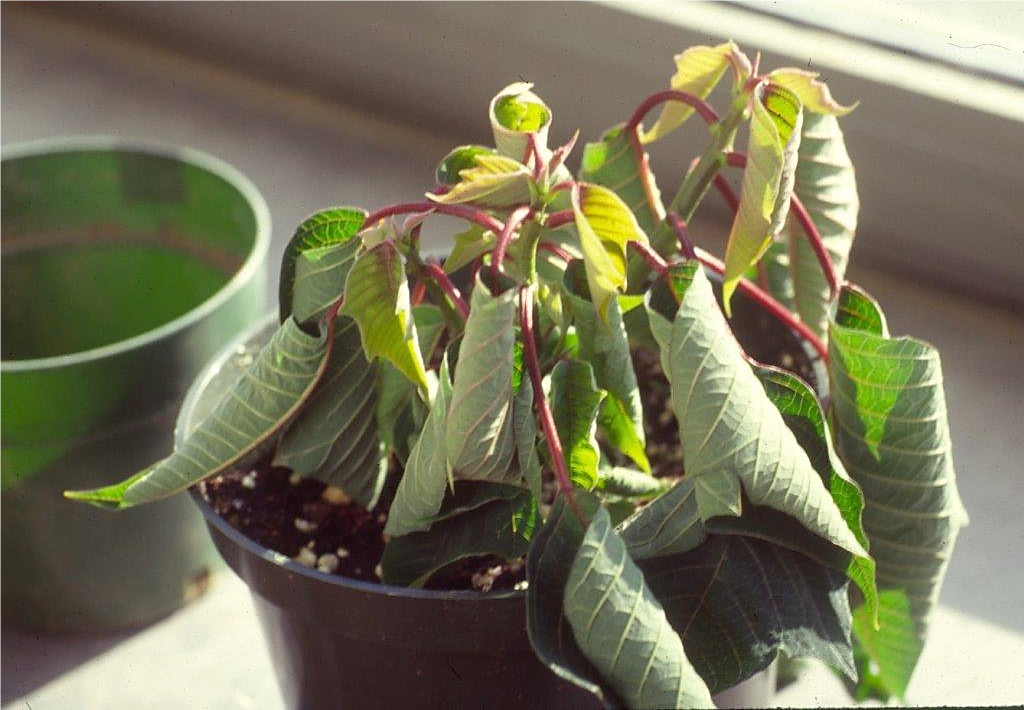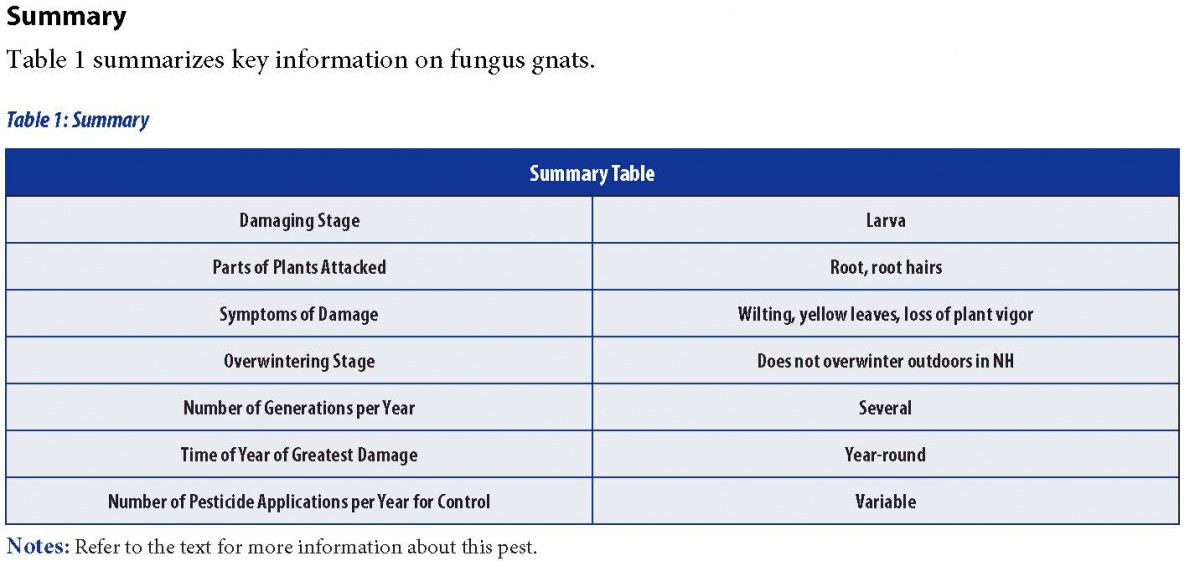Fungus gnats comprise two entire families of flies, but in greenhouses, most commonly we see Mycetophilids, especially Bradysia coprophila and B. impatiens. They are found throughout the United States, and the larvae are indiscriminate feeders on the roots or inside stems of a wide variety of plants. This can cause poor plant growth, yellowing, and stunting. The insects can also spread plant pathogens, and make plants more susceptible to pathogen attack. The adults can be a nuisance and a sign to customers that plants could be infested.

Life Cycle and Description
Fungus gnats have four developmental stages: eggs, larvae, pupae and adults. The eggs are oval, shiny, white, semi-transparent, and extremely small. They can be found in small groups (10+) or singly on surface soil or host plants. The eggs take approximately four to six days to hatch.
The next stage, the larvae, are approximately 1/4” long when mature. They have a shiny black head capsule and a whitish or transparent body. They are usually found in the growing medium or on plant stems below the medium surface. When the larvae have completed their feeding, they pupate in the plant debris, media or soil. At the end of the pupal stage, adult flies emerge from the soil.
Adults are weak fliers and somewhat resemble mosquitoes. Adult females can lay more than 100 eggs in the first week after emergence. There are several overlapping generations per year.

Alan T. Eaton.
Management
IPM Strategies:
- Cultural Practices - Fungus gnats prefer moist media, so do not overwater plants. Also, avoid potting mixes made from compost aged less than one year. If possible, eliminate wet areas under benches otherwise they can become breeding grounds for gnats.
- Monitoring - Use yellow sticky cards placed face up on the potting mix surface, or attached to stakes with clothes pins. Apply biologicals/ chemicals at first sign of adult capture on cards. Monitor cards weekly to determine population levels. Larvae can be detected with 1” x 2” potato plugs inserted into the media. Weekly counting of the larvae on these plugs provides larval population data. Fungus gnats are difficult to control once populations build up. A few fungus gnats can be tolerated.
- Biological Control - (1) Bacillus thuringiensis israelensis applied every three to seven days can provide some control. (2) Nematodes, such as Steinernema feltiae, can be successful if the first application is made at planting. However, nematodes can show erratic control. Repeat two or three times at weekly intervals. Steinernema feltiae, the best nematode to use, is less available. (3) Predatory mites (Hypoaspis miles, now named Stratiolaelaps scimitus) showed excellent control in university trials if introduced at planting. Apply twice, a week apart. Control lasts six to eight weeks. The supplier of mites can recommend the amount to release. (4) Predatory rove beetles (Atheta coriaria) can control the larvae, but take longer to establish than predatory mites.
- Chemical Control - Consult your county Agricultural Field Specialist for specific pesticide recommendations. Once a fungus gnat outbreak occurs, several applications may be necessary. Do not allow fungus gnats to reach outbreak levels.


Stop! Read the label on every pesticide container each time before using the material. Pesticides must be applied only as directed on the label to be in compliance with the law. All pesticides listed in this publication are contingent upon continued registration. Contact the Division of Pesticide Control at (603) 271-3550 to check registration status. Dispose of empty containers safely, according to New Hampshire regulations.
Download the resource for the complete factsheet.
